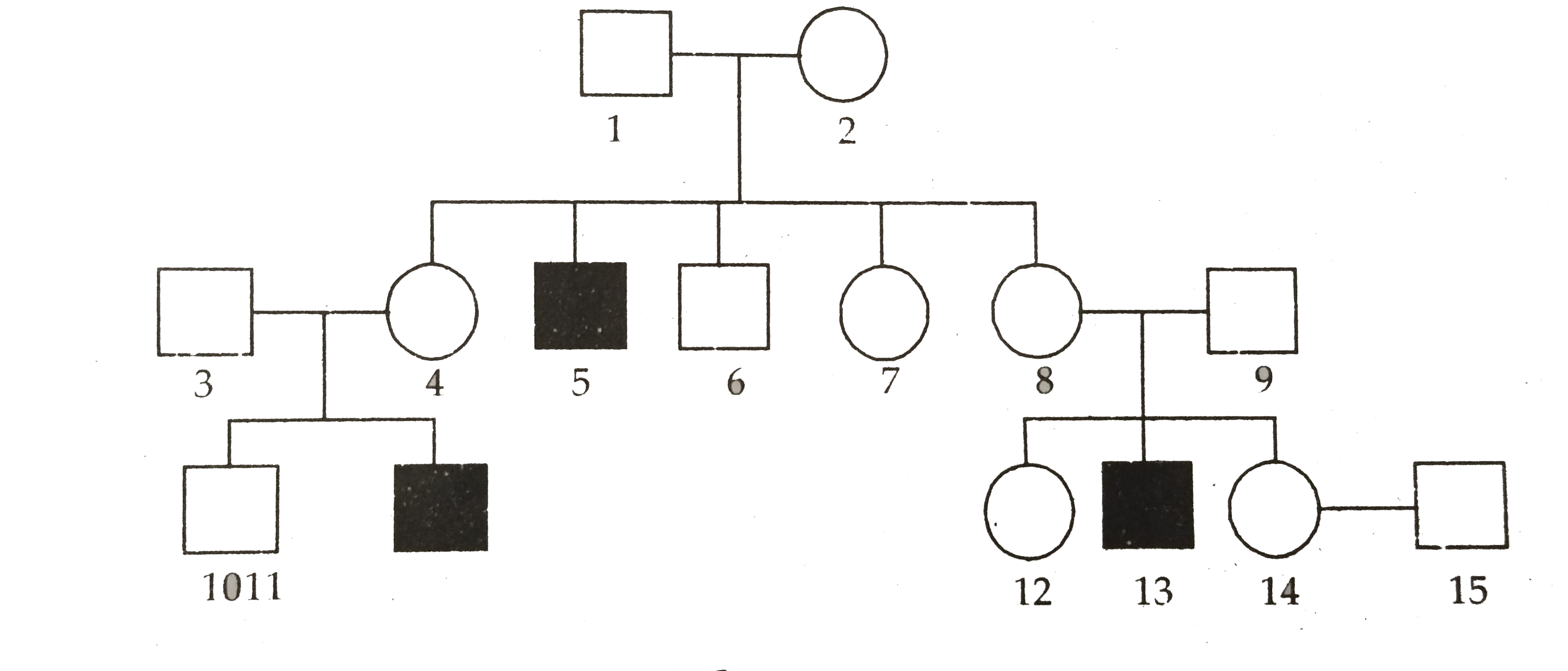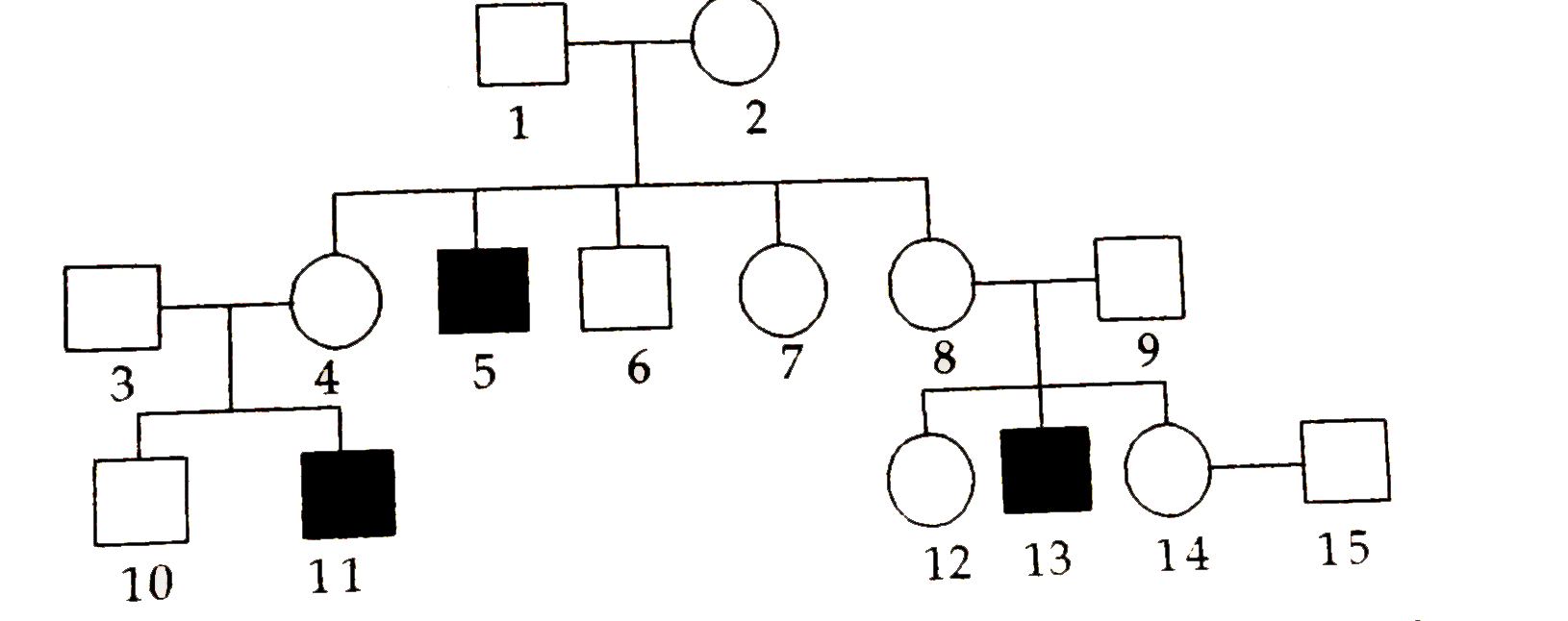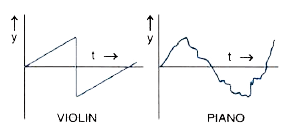Haemophilia and Thalassemia both are examples of Mendelian order, but show difference in their inheritance pattern. Explain how.
To explain the differences in the inheritance patterns of hemophilia and thalassemia, we can follow these steps:
Step 1: Define the Disorders
- Hemophilia: This is a genetic disorder characterized by the inability of blood to clot properly, leading to excessive bleeding. It is primarily caused by a deficiency in clotting factors.
- Thalassemia: This is a blood disorder involving less than normal amounts of an oxygen-carrying protein called hemoglobin, which can lead to anemia.
Step 2: Identify the Type of Inheritance
- Hemophilia: It is classified as an X-linked recessive disorder. This means the gene responsible for hemophilia is located on the X chromosome. Males (XY) are more frequently affected because they have only one X chromosome. Females (XX) need to inherit two copies of the mutated gene to express the disorder.
- Thalassemia: This is an autosomal recessive disorder. The genes responsible for thalassemia are located on non-sex chromosomes (autosomes). Both males and females can be equally affected by this disorder.
Step 3: Analyze the Affected Individuals
- In Hemophilia:
- Males are affected if they inherit the X chromosome with the hemophilia gene (X^H) from their mother.
- Females can only be affected if they inherit the mutated gene from both parents (X^H X^H).
- Thus, in a cross where a female is a carrier (X^H X) and a normal male (X Y), the offspring could be:
- Normal female (X X)
- Carrier female (X^H X)
- Normal male (X Y)
- Affected male (X^H Y)
- This results in 50% carriers and 50% normal females, while 50% of males are affected.
- In Thalassemia:
- Both males and females can be carriers (A^T A) or affected (A^T A^T).
- In a cross between two carriers (A^T A), the offspring could be:
- Normal (A A)
- Carrier (A^T A)
- Affected (A^T A^T)
- This results in a 25% chance of being affected, 50% chance of being a carrier, and 25% chance of being normal, with no distinction based on sex.
Step 4: Summarize the Differences
- Inheritance Pattern: Hemophilia is X-linked recessive, affecting mainly males, while thalassemia is autosomal recessive, affecting both sexes equally.
- Affected Individuals: In hemophilia, females are affected only if they inherit the mutated gene from both parents, whereas in thalassemia, both males and females can be affected if they inherit two copies of the mutated gene.
Conclusion
In summary, hemophilia and thalassemia are both Mendelian disorders but differ significantly in their inheritance patterns due to the location of the genes responsible for these conditions and the way they are expressed in males and females.
---
- Hemophilia: This is a genetic disorder characterized by the inability of blood to clot properly, leading to excessive bleeding. It is primarily caused by a deficiency in clotting factors.
- Thalassemia: This is a blood disorder involving less than normal amounts of an oxygen-carrying protein called hemoglobin, which can lead to anemia.
- Hemophilia: It is classified as an X-linked recessive disorder. This means the gene responsible for hemophilia is located on the X chromosome. Males (XY) are more frequently affected because they have only one X chromosome. Females (XX) need to inherit two copies of the mutated gene to express the disorder.
- Thalassemia: This is an autosomal recessive disorder. The genes responsible for thalassemia are located on non-sex chromosomes (autosomes). Both males and females can be equally affected by this disorder.
- In Hemophilia:
- Males are affected if they inherit the X chromosome with the hemophilia gene (X^H) from their mother.
- Females can only be affected if they inherit the mutated gene from both parents (X^H X^H).
- Thus, in a cross where a female is a carrier (X^H X) and a normal male (X Y), the offspring could be:
- Normal female (X X)
- Carrier female (X^H X)
- Normal male (X Y)
- Affected male (X^H Y)
- This results in 50% carriers and 50% normal females, while 50% of males are affected.
- Both males and females can be carriers (A^T A) or affected (A^T A^T).
- In a cross between two carriers (A^T A), the offspring could be:
- Normal (A A)
- Carrier (A^T A)
- Affected (A^T A^T)
- This results in a 25% chance of being affected, 50% chance of being a carrier, and 25% chance of being normal, with no distinction based on sex.
- Inheritance Pattern: Hemophilia is X-linked recessive, affecting mainly males, while thalassemia is autosomal recessive, affecting both sexes equally.
- Affected Individuals: In hemophilia, females are affected only if they inherit the mutated gene from both parents, whereas in thalassemia, both males and females can be affected if they inherit two copies of the mutated gene.
In summary, hemophilia and thalassemia are both Mendelian disorders but differ significantly in their inheritance patterns due to the location of the genes responsible for these conditions and the way they are expressed in males and females.
Topper's Solved these Questions
- PRINCIPLES OF INHERITANCE AND VARIATIONBOOK - ICSECHAPTER - PRINCIPLES OF INHERITANCE AND VARIATIONEXERCISE - PRACTICE QUESTIONS ( SHORT ANSWER TYPE-II QUESTIONS)
29 Videos
- PRINCIPLES OF INHERITANCE AND VARIATIONBOOK - ICSECHAPTER - PRINCIPLES OF INHERITANCE AND VARIATIONEXERCISE - PRACTICE QUESTIONS ( LONG ANSWER TYPE QUESTIONS)
24 Videos
- PRINCIPLES OF INHERITANCE AND VARIATIONBOOK - ICSECHAPTER - PRINCIPLES OF INHERITANCE AND VARIATIONEXERCISE - PRACTICE QUESTIONS ( VERY SHORT ANSWER TYPE QUESTIONS)
31 Videos
- ORGANISMS AND POPULATIONSBOOK - ICSECHAPTER - ORGANISMS AND POPULATIONSEXERCISE - COMPETITION CORNER (ASSERTION AND REASON TYPE QUESTIONS)
22 Videos
- QUESTION PAPER 2022 TERM 1BOOK - ICSECHAPTER - QUESTION PAPER 2022 TERM 1EXERCISE - MULTIPLE CHOICE QUESTIONS
45 Videos
Similar Questions
Both Heamophilia and Thalassemia are blood related disorders in humans Write their causes and the the difference between the two . Name the category of genetic disorder they both come under .
View SolutionExplain with examples the meaning of order of magnitude.
View SolutionWhy are thalassemia and hemophilia categorized as Mendelian disorders ?
(a) Write the symptoms of these diseases. Explain their pattern of inheritance in humans.
( b) Write the genotypes of the normal parents producing a hemophilic son.
View Solution(a) Explain Mendel's law of independent assortment by taking a suitable example.
(b) How did Morgan show the deviation in inheritance pattern in Drosophila with respect to this law?
View Solution(a) Explain Mendel's law of independent assortment by taking a suitable example.
(b) How did Morgan show the deviation in inheritance pattern in Drosophila with respect to this law?
View SolutionHaemophilia is a sex linked recessive disorder of humans. The pedigree chart given below shows the inheritance of haemophilia in one family. Study the pattern of inheritance and answer the questions given

Give all the possible genotypes of the members 4,5 and 6 in the pedigree chart.
(b) A blood test shows that the individual 14 is a carrier of haemophilia. The member numbered 15 has recently married the member numbered 14. What is the probability that their first child will be a haemophilic male? Show with the help of Punnett square.
View SolutionHaemophilia is a sex-linked recessive disorder of humans. The given pedigree chart shows the inheritance of haemophilia in one family. Study the pattern of inheritance and answer the questions given.
(a) Give all the possible genotypes of the members 4, 5 and 6 in the pedigree chart. (b) A blood test shows that the individual 14 is a carrier of haemophilia. The member number 15 has recently married the member numbered 14. What is the probability that their first child will be a haemophilic male?

View SolutionHaemophilia is a sex linked recessive disorder of humans. The pedigree chart given below shows the inheritance of Haemophilia in one family. Study the pattern of inheritance and answer the questions given.

(a) Give all the possible genotypes of the members 4, 5 and 6 in the pedigree chart.
(b) A blood test shows that the individual 14 is a carrier of gaemophilia. The member numbered 15 has recently married the member numbered 14. What is the probability that their first child will be a haemophilic male ? Show with the help of Punnett square.
View SolutionInheritance patterns of flower colour in garden pea plant and snap dragon differ. Why is the difference observed? Explain the difference with the help of crosses in their inheritance patterns.
View SolutionTwo musical notes of the same pitch and same loudness are played on two different instruments. Their wave patterns are shown in Fig.

Explain why are the wave patterns different.
View Solution
